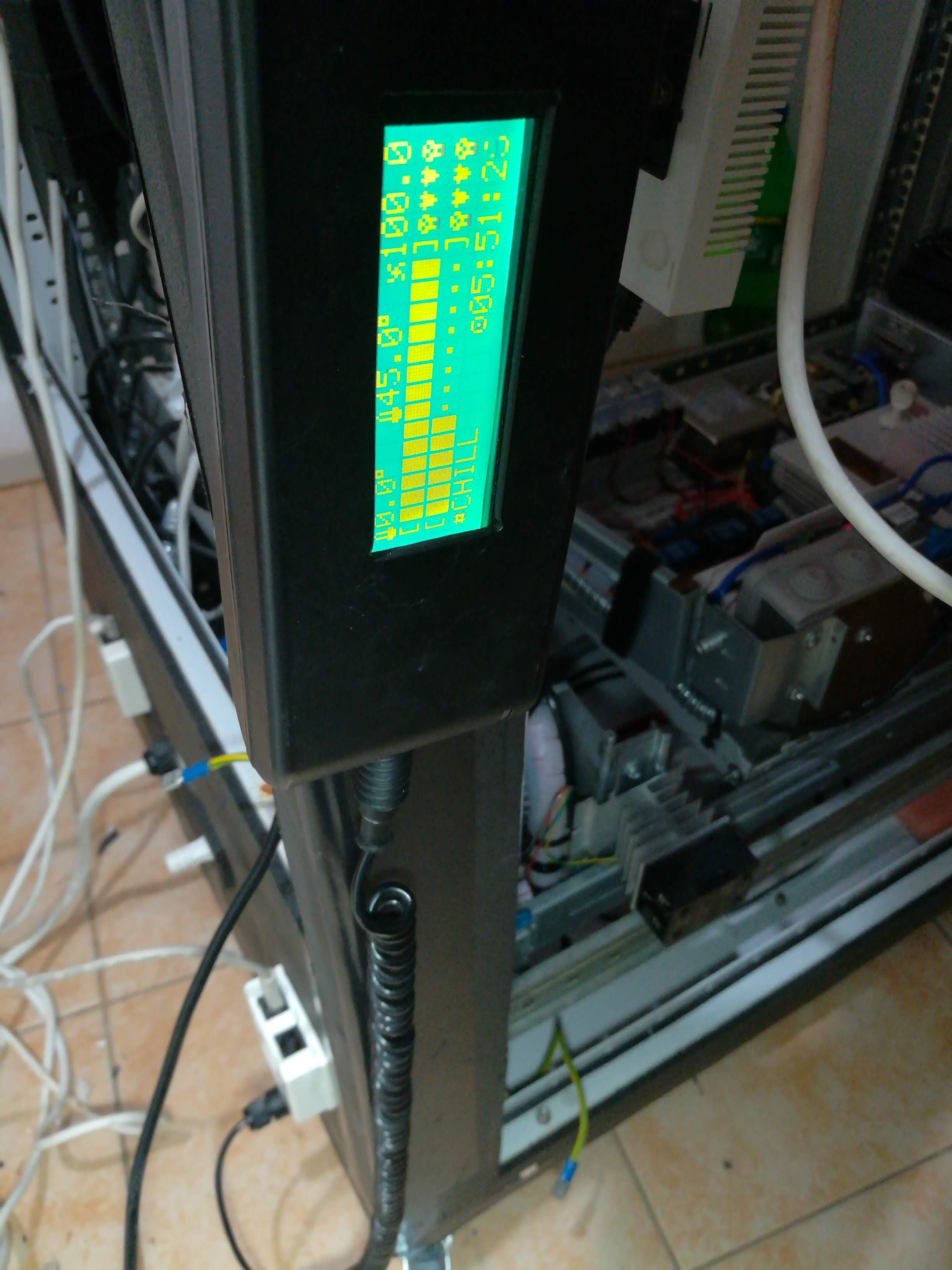
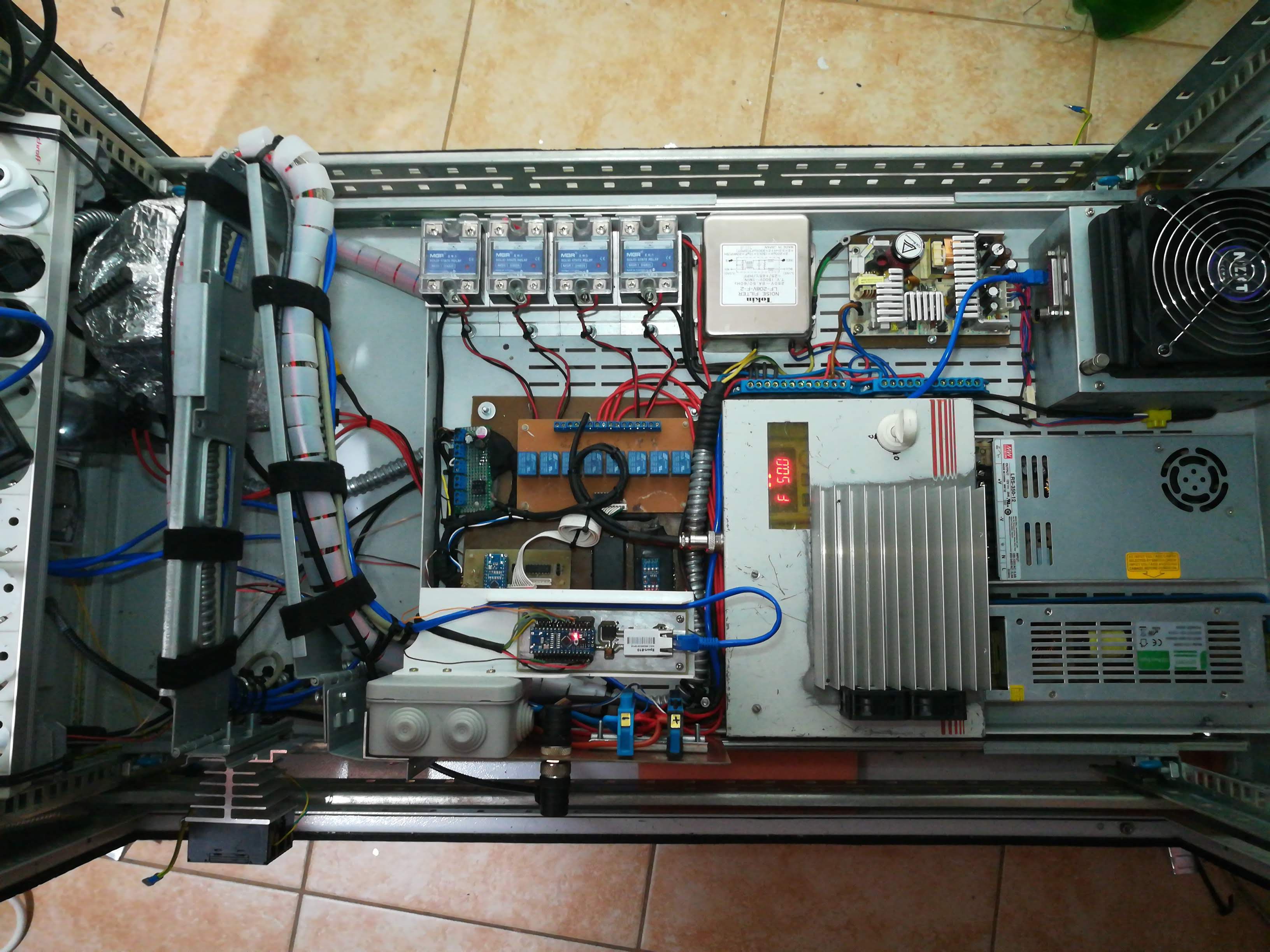
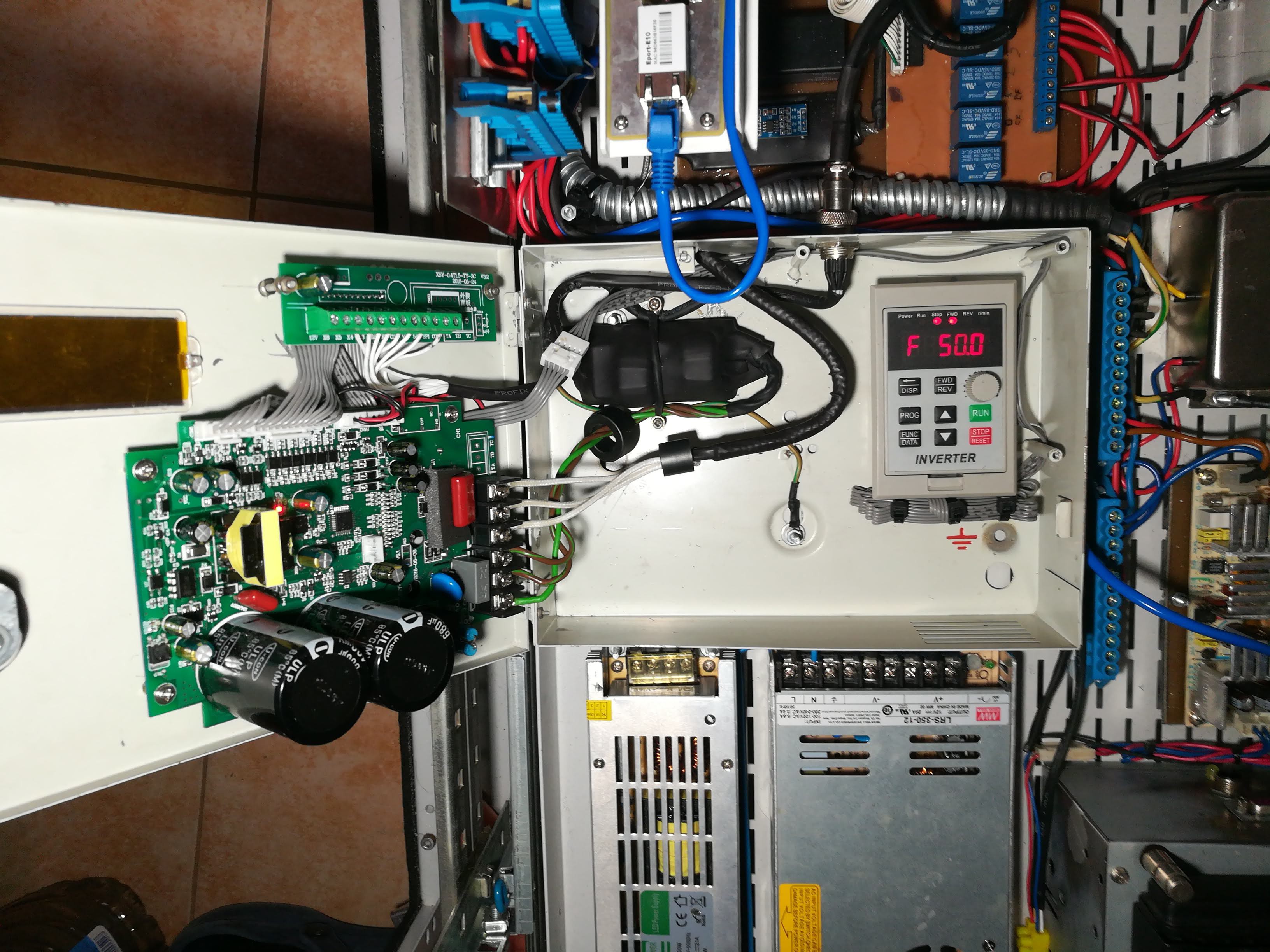
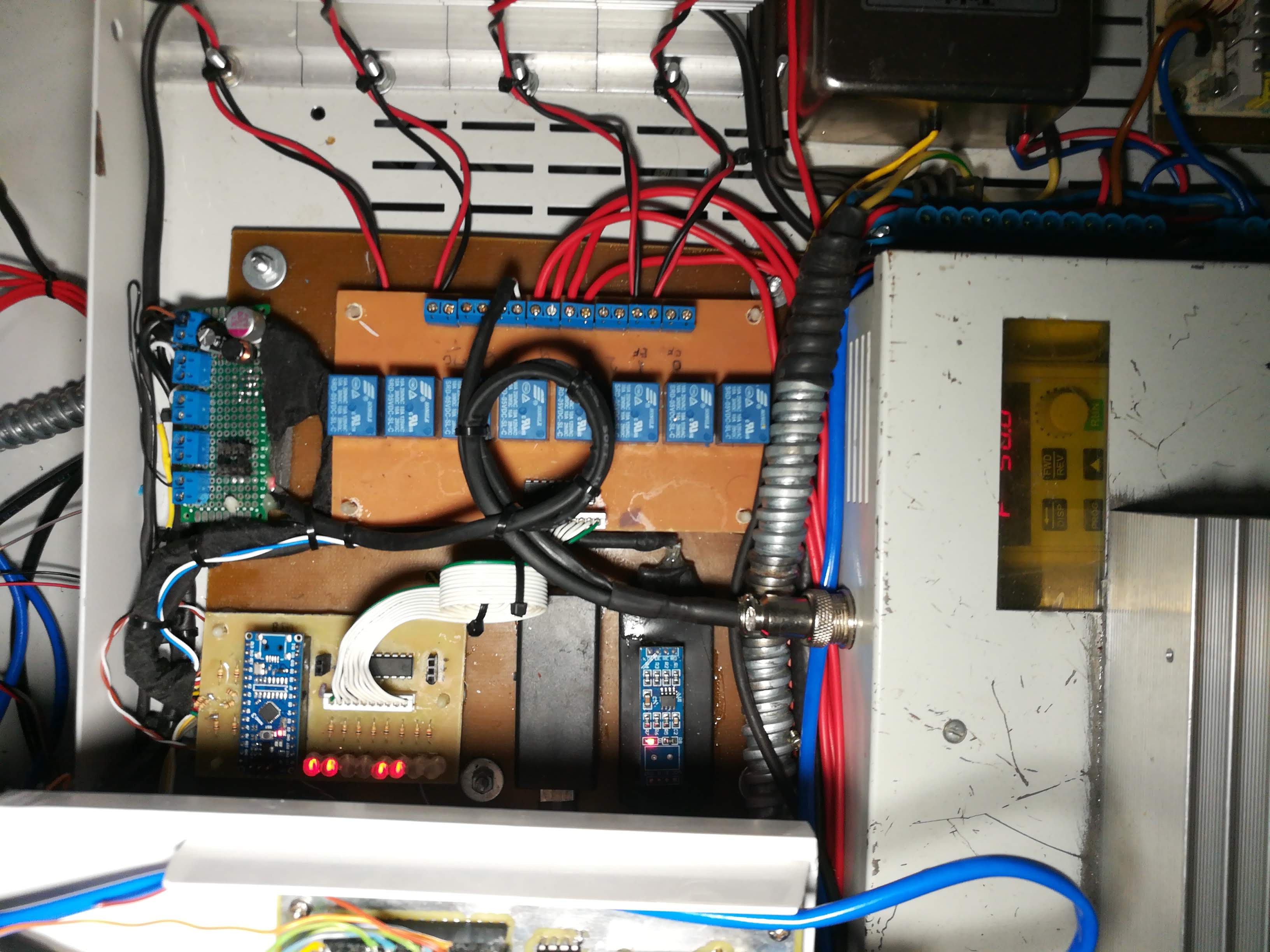
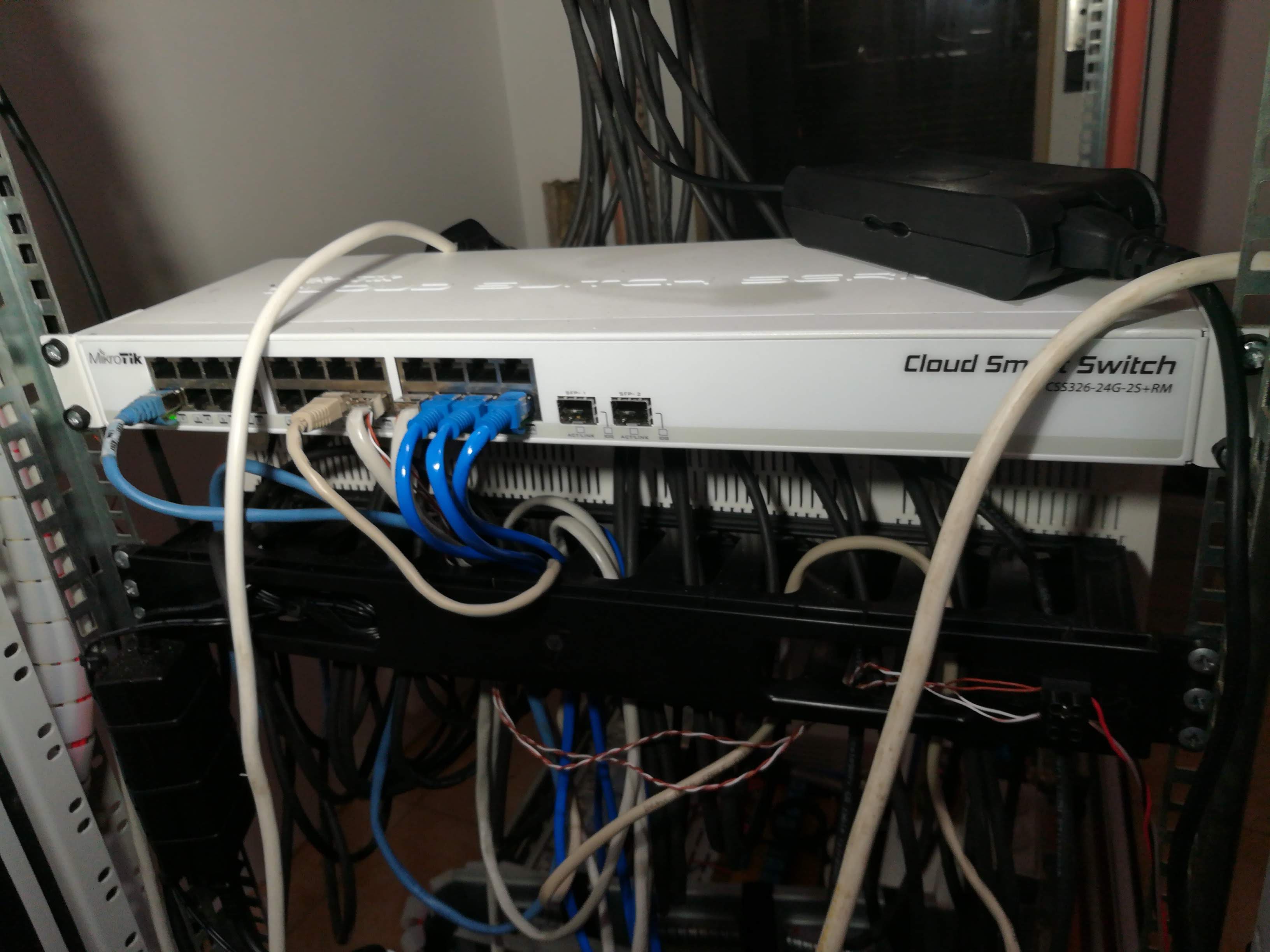
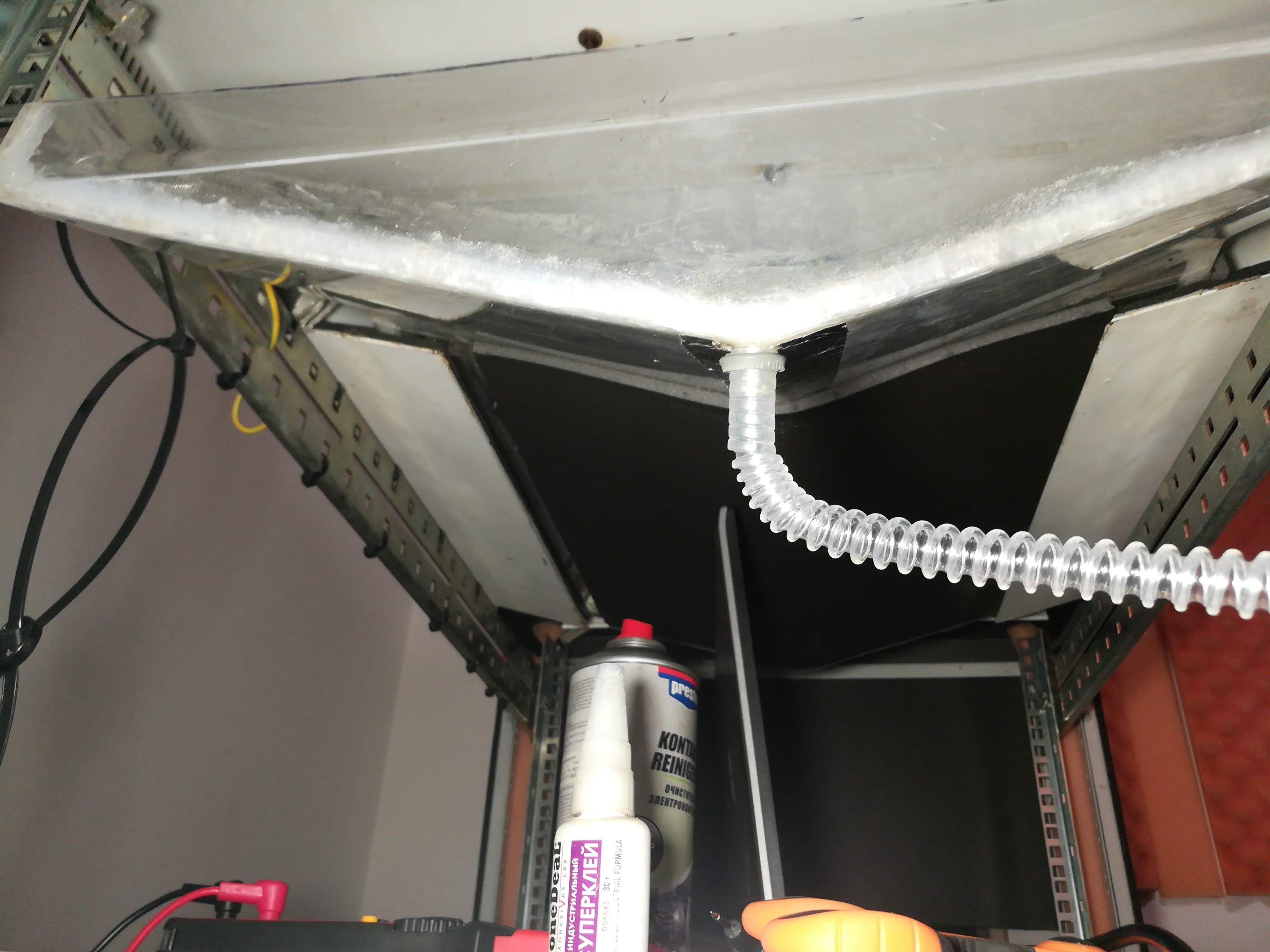
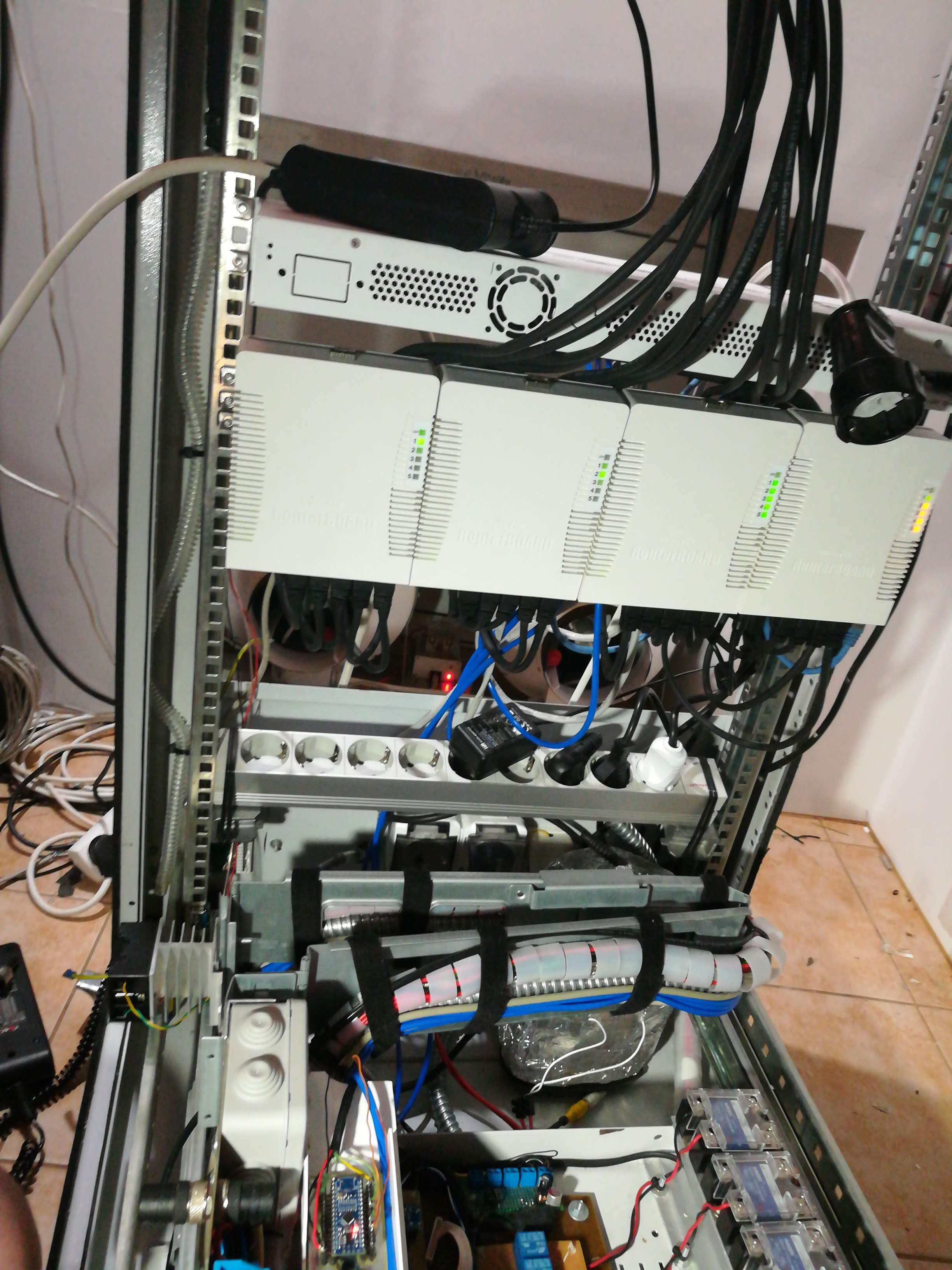
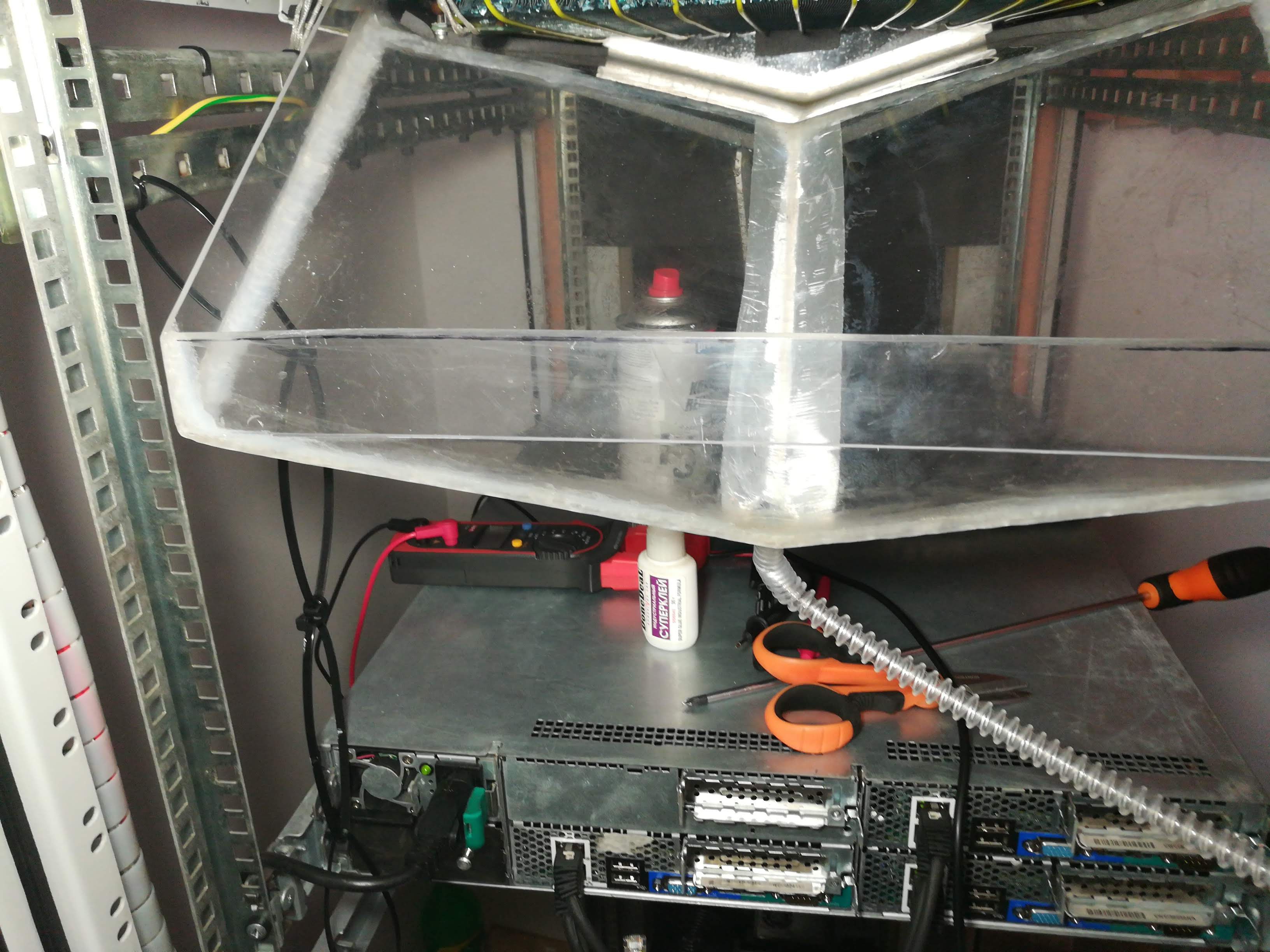
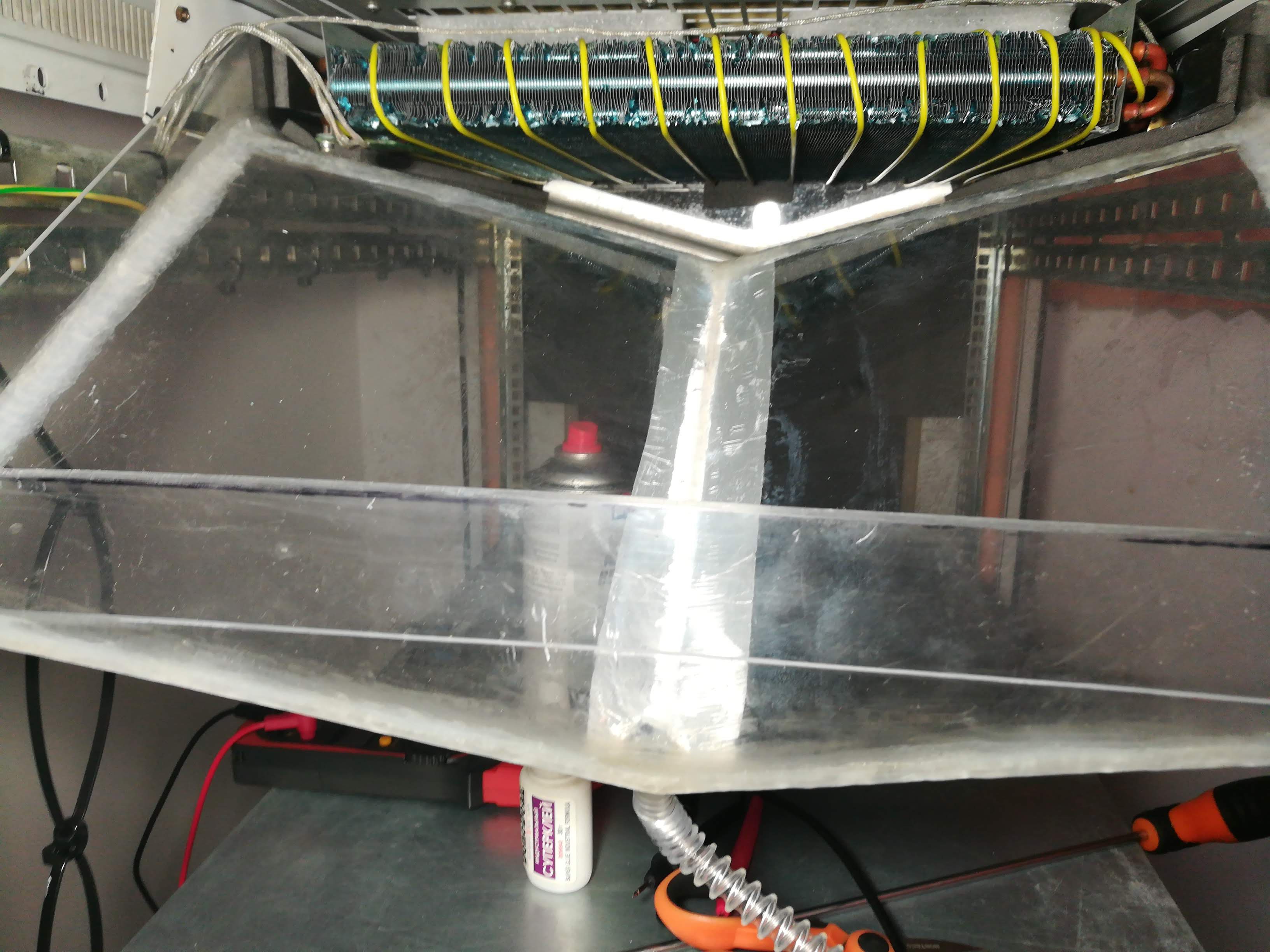
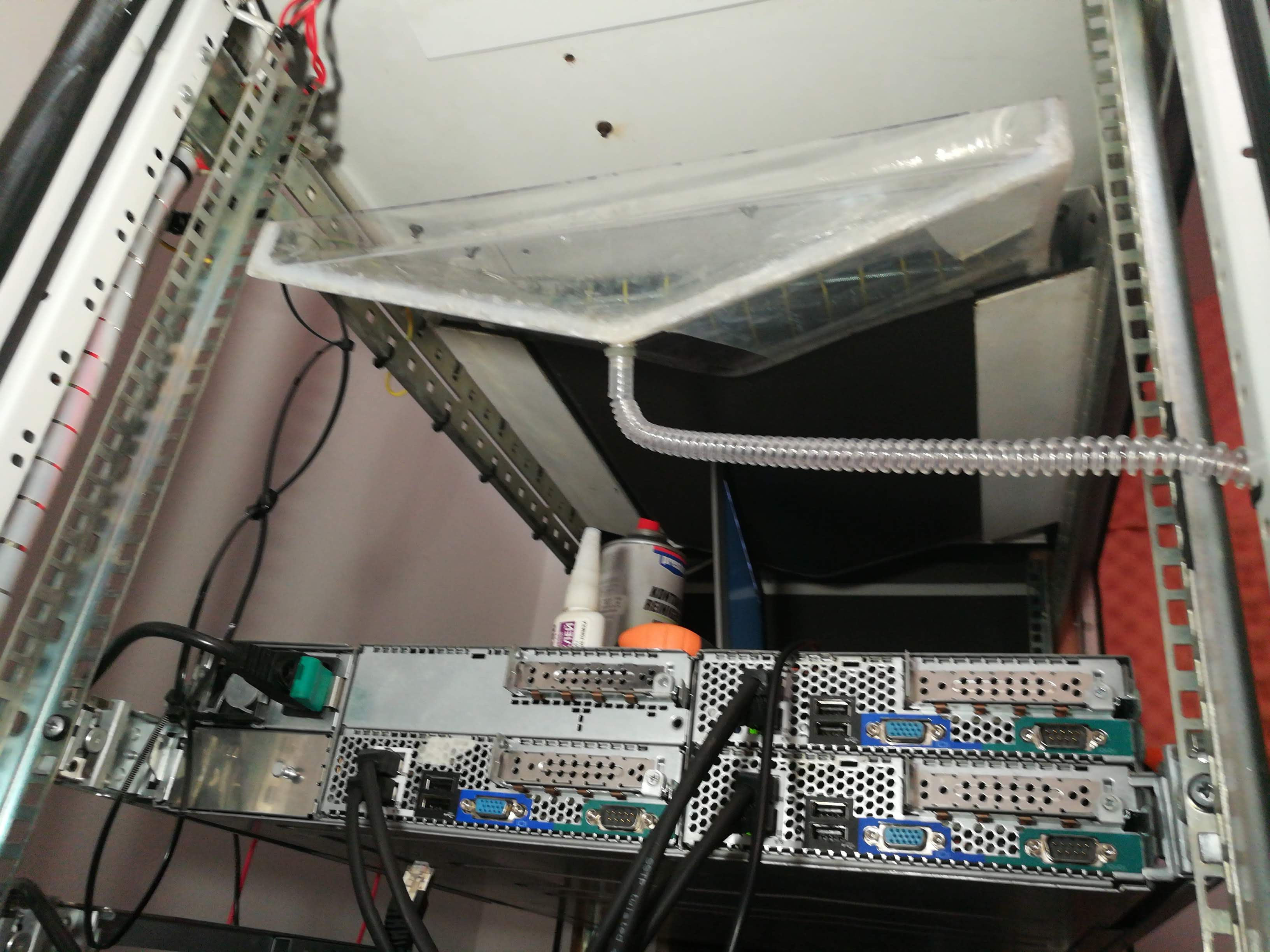
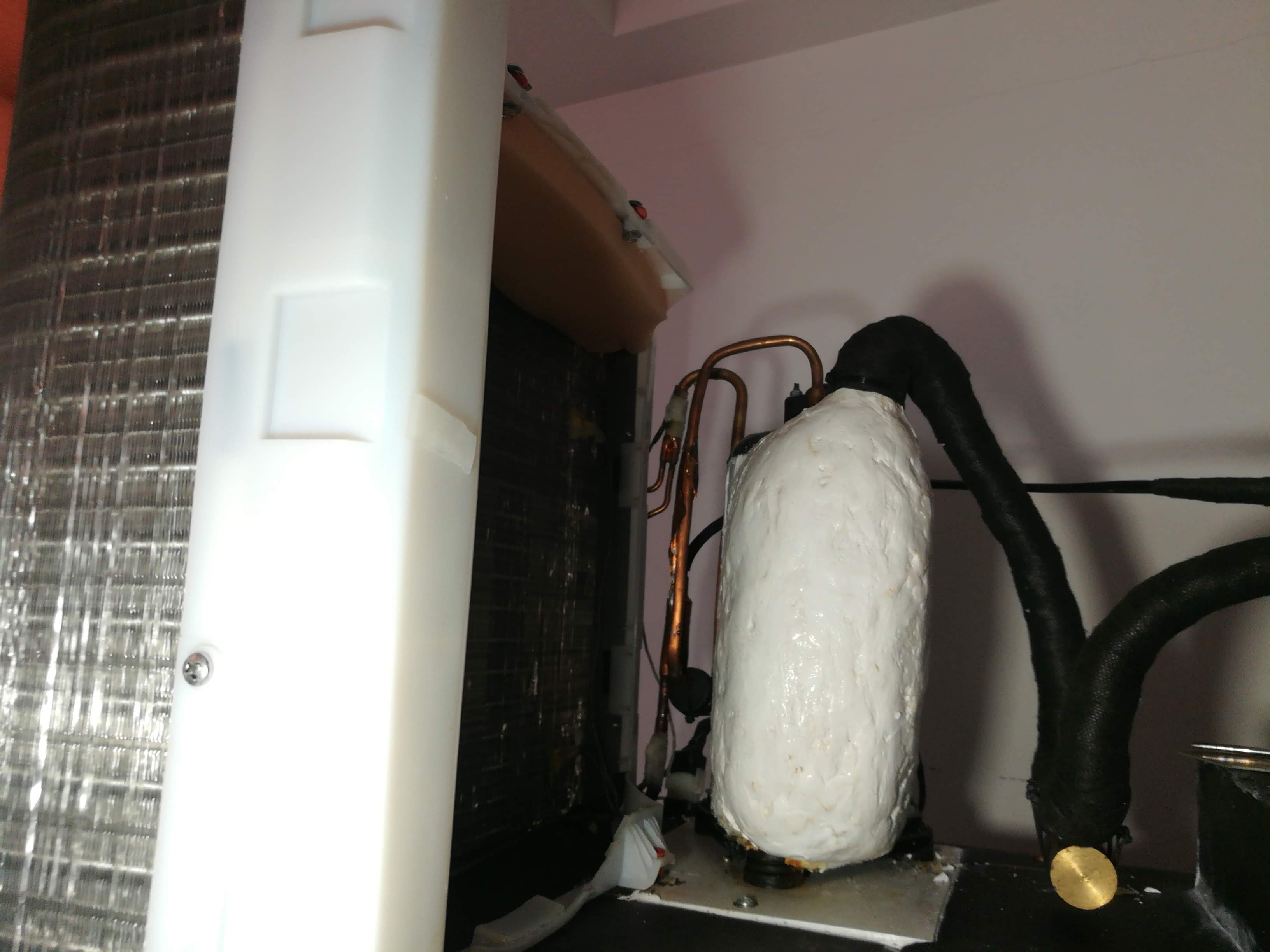
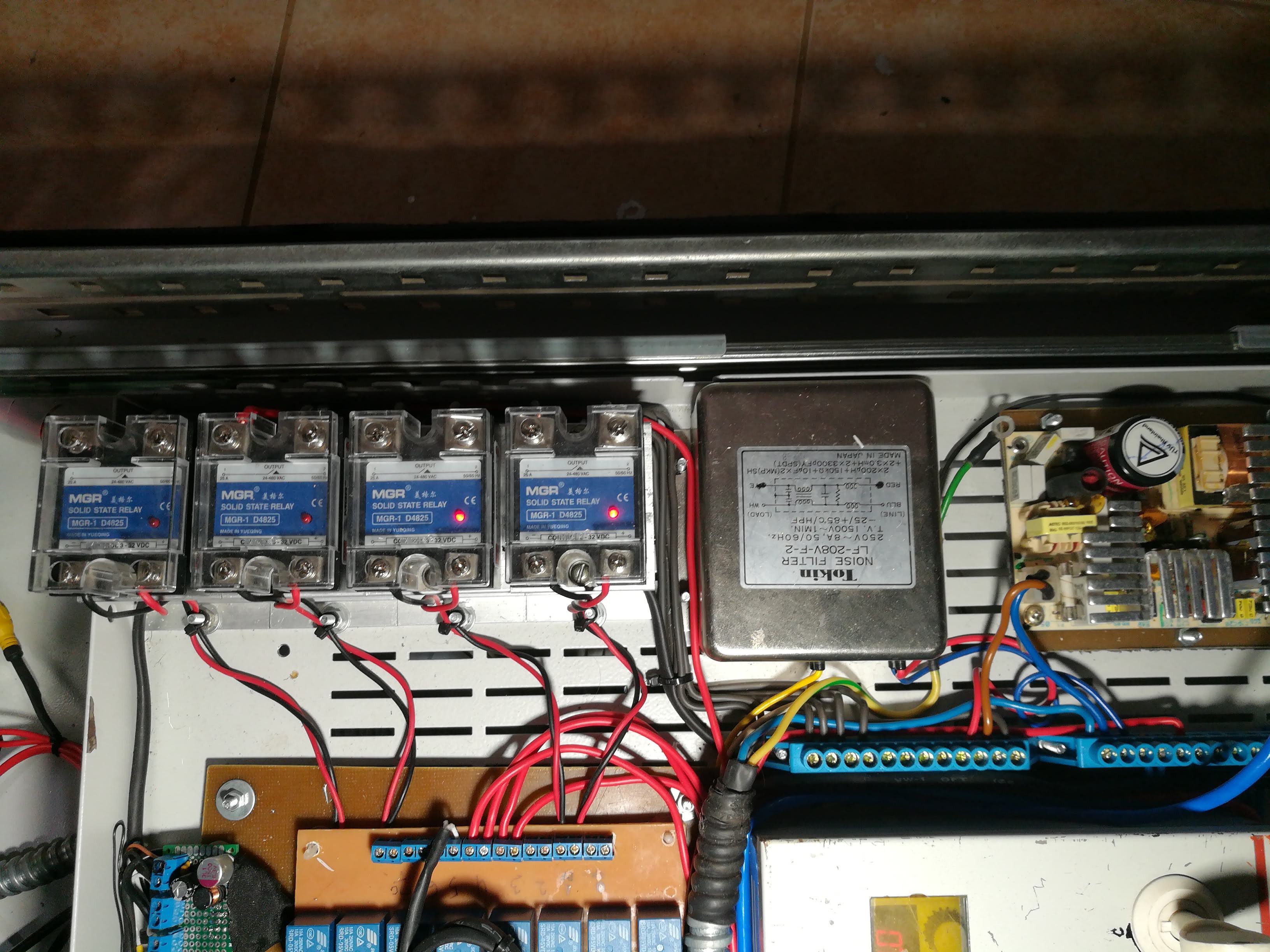
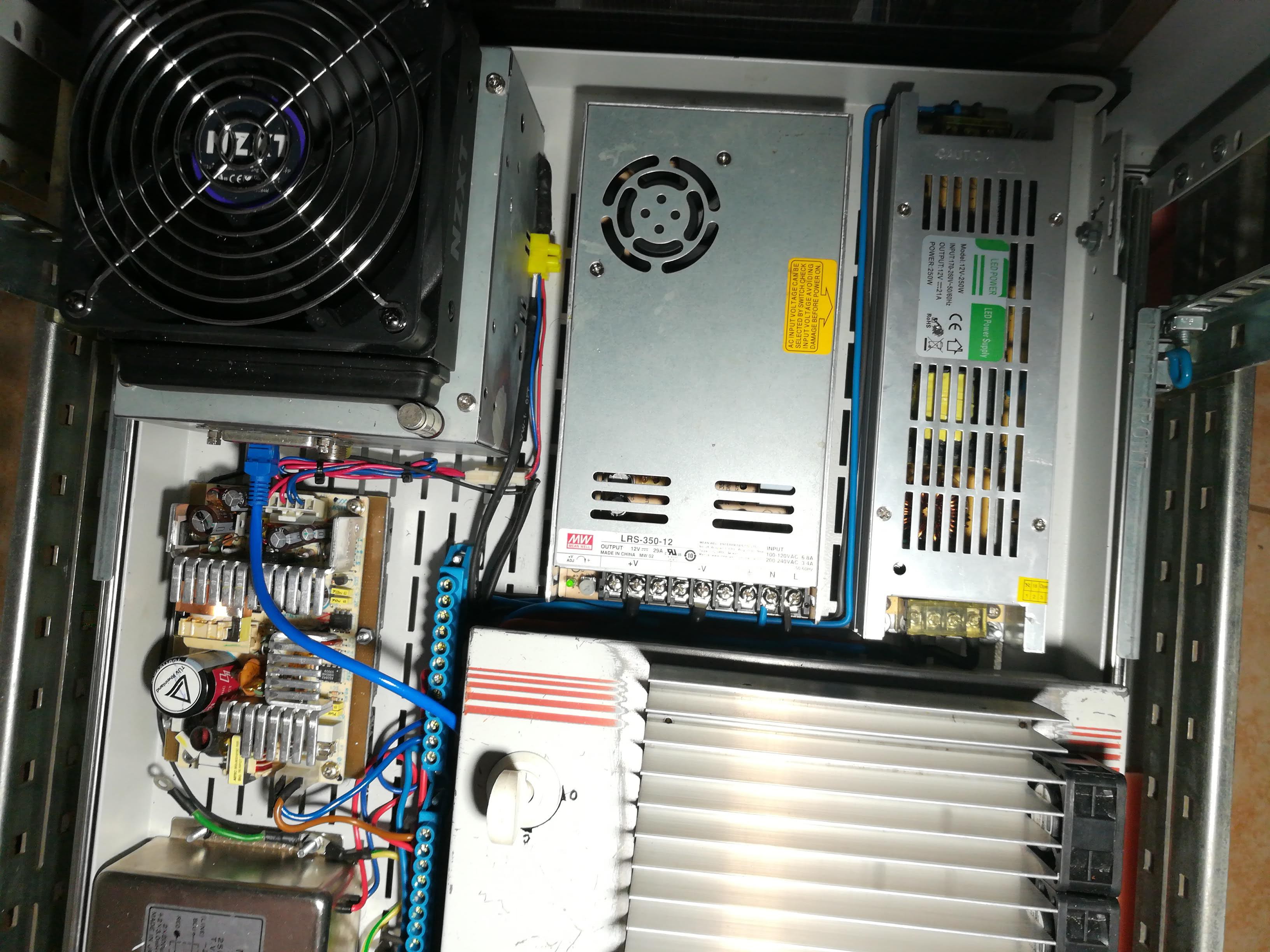
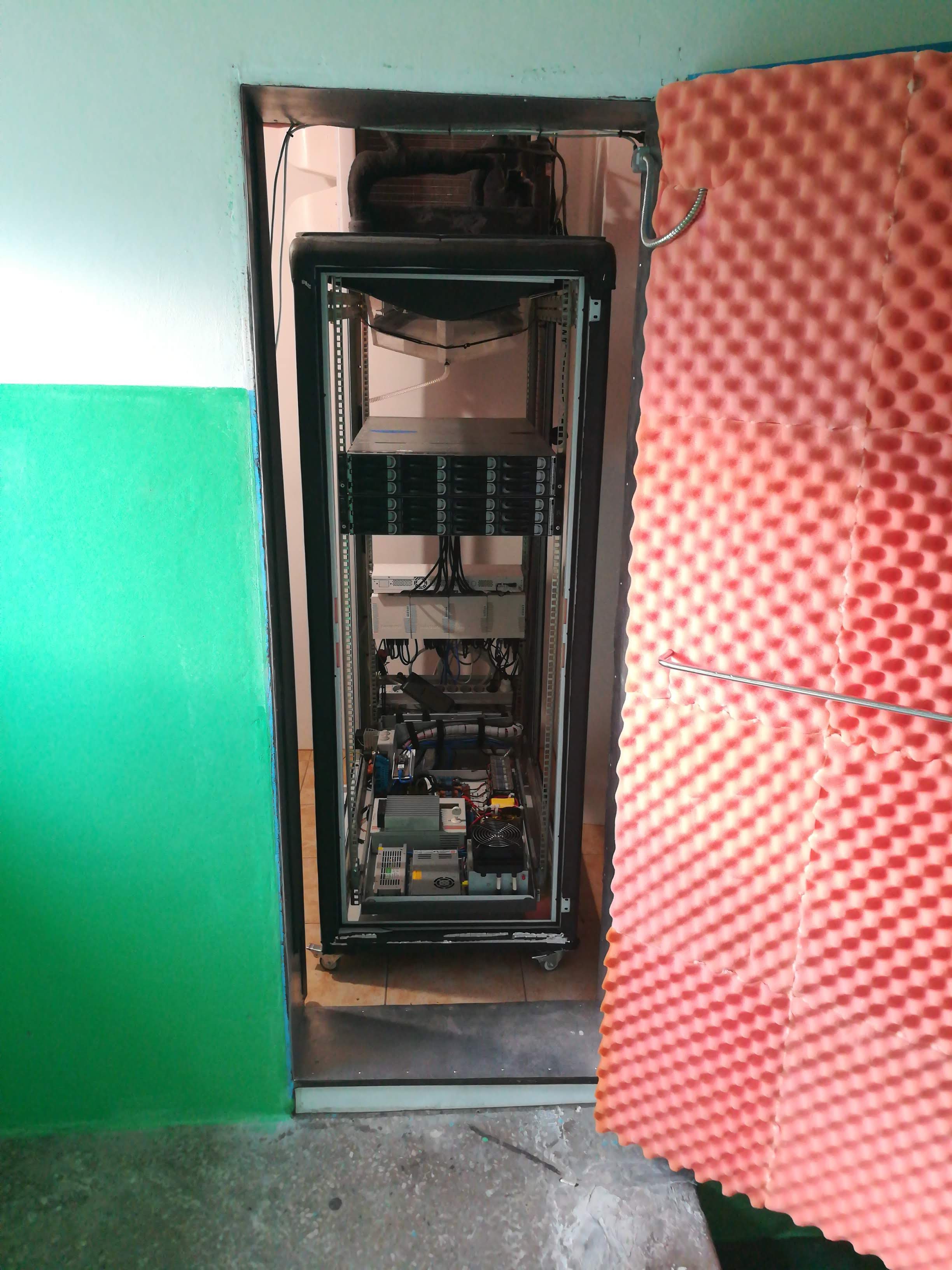
The system in idle mode, consumes about 1.5 kW of electricity, while inside the rack, a stable temperature of about -20 centigrade (in the summer about -17 centigrade).
The refrigeration compressor is controlled by VFD, which, like everything else, including the fans, is in turn controlled by a microcontroller.
Evaporator and condenser of the cooling system - were used from an old window air conditioner. The compressor of the cooling system - was selected separately based on the performance and temperature conditions of its operation.
The condenser of the cooling system, purged with cold street air,after filtering with car air filters
Warm air enters the surrounding room, from where it is quite efficiently drawn into a passive exhaust ventilation system.
The purpose of this post is to uncover the problems that lie behind the desire to get a home lab / rack server in proper conditions - this is mainly the lack of dust and heat.
About 750W consumes a cooling system. Each server consumes about 250-400W, at the same time, each server(2 servers total) contains 3 computing nodes with 2 processors(6 cores) each. 72 cores total, if I may say so.
It is all on standby.
In most cases, I use one computational node as the network storage of the NFS / iSCSI and sometimes I use one more node as a hypervisor for work. I rarely use the rest of the nodes, mainly for distributed assembly of the kernel / world or ports. And so, they are turned off for a longer time, which further reduces consumption.
With my electricity tariff of $ 0.037 for 1 kW / h during the day and $ 0.018 for 1 kW / h at night, this is not so much(~320$/year, if i counted correctly).
Moreover, this is all equipment, if necessary it is possible to turn on and off remotely with one click.
Normal temperature should be around 17 degrees Celsius. Simply, in such a small volume and such a performance of the cooling system, I can not provide such a stable temperature at different loads. I think fast cyclic temperature changes will be more damaging to equipment. At -20 degrees Celsius, temperature jumps at different loads do not exceed 1-2 degrees Celsius per minute, at high temperatures, this spread is already ten or more degrees. It turns out that the inertia of the system is too great, which I could not compensate for with my PID control, I think that I will not succeed in such a system configuration.
Here, I had to make some modifications with the server’s ear, which contained a thermistor connected to the fan control board. I had to replace it with a digital potentiometer with a controller and a digital thermometer, otherwise the overflow occurs in the fan control board when the temperature drops below zero, and the fan control board believes that the temperature is above 200 degrees Celsius and turns on the fans 100% :)
Two+ years of work in such temperature conditions have not yet revealed any problems or, for example, degradation of capacitance or equivalent series resistance of capacitors.Judging by the voltage charts, they are pretty flat for the whole time. Perhaps this is just luck due to the fact that all capacitors are solid-state. An exception, only power supplies, but they are quite warm even at this ambient temperature.
But, I think I need to see the waveform in continuous operation...
By the way, not the topic, the biggest problem was the VFD, because of which I got constant bugs in the operation of the RS485(replaced by Ethernet transceivers) and all other subsystems. Whatever I did, what filtering I would not apply, there were still floating problems, until it was isolated with a separate isolation transformer, a shielded casing and an EMI filter(due to the fact that the 10 kHz harmonic component, somehow propagated in the opposite direction and through an isolation transformer) + optical isolation for control. Just shielded lines - did not help. Not sure if this is good, but the compressor of the cooling...
 Andrew Shevchuk
Andrew Shevchuk